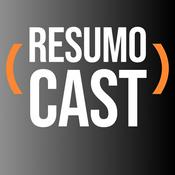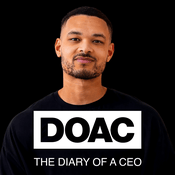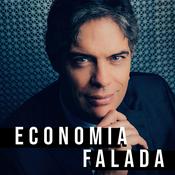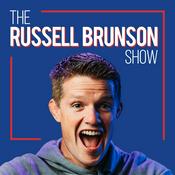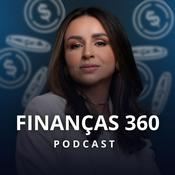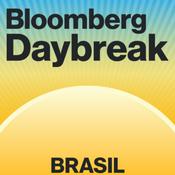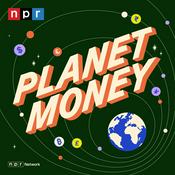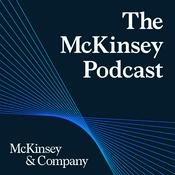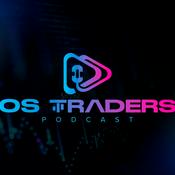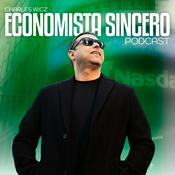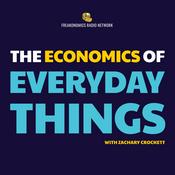437 episódios

It’s Not K-Shaped. It’s No Shaped | Jim Paulsen on What You're Getting Wrong About 2026
06/1/2026 | 57min
Subscribe to the Jim Paulsen Show on Apple Podcastshttps://podcasts.apple.com/us/podcast/the-jim-paulsen-show/id1828054999Subscribe on Spotifyhttps://open.spotify.com/show/3QaBDVGuBZ3cZfFZ4mqPFcIn this episode of the Jim Paulsen Show, Jim Paulsen joins Jack Forehand and Justin Carbonneau to break down what the economy and markets may really be signaling beneath the headline numbers. Drawing from his recent outlook and long history studying market cycles, Jim explains why growth may be weaker than it appears, how policy lags are shaping the outlook, and why today’s market looks very different from past late-cycle environments. The conversation explores the divide between the “new era” economy and the rest of the market, what that means for investors in 2026, and where opportunities may be emerging as monetary and fiscal policy begin to shift.Topics covered in this episode• Why headline GDP growth may be overstating the true strength of the economy• How trade distortions are affecting recent GDP data• The concept of a “no-shaped economy” and the divide between new era and old era businesses• Labor market signals that suggest economic sluggishness beneath the surface• Why this may be one of the most disliked bull markets in history• The role of policy lags and why easing could matter more than investors expect• How market concentration has shaped returns over the last several years• Warning signs emerging within the technology sector• The relationship between corporate cash levels, R&D spending, and tech leadership• Why market breadth and old era sectors may become more important going forward• Thoughts on bonds, stocks, commodities, gold, and portfolio positioning• Why international and emerging markets could benefit from a weaker dollar• How investors might think about diversification in an unusual market cycleTimestamps00:00 Introduction and key themes from Jim’s outlook03:00 Why the economy may be weaker than GDP headlines suggest06:00 Labor market signals and recession-like dynamics12:00 Policy lags, the Fed, and why growth could soften further15:00 Market performance after multiple strong years18:00 The no-shaped economy and the split between new era and old era24:00 Strange market signals at all-time highs27:00 Valuations, sentiment, and why pessimism matters29:00 Fed easing expectations and consensus forecasts35:00 Warning signs for technology stocks42:00 Corporate cash, R&D spending, and tech leadership risks47:00 Portfolio construction and asset allocation thinking55:00 Final thoughts on opportunities and risks ahead

4% of Stocks. 100% of Wealth | Gautam Baid on the Brutal Math of Compounding
02/1/2026 | 56min
In this wide-ranging conversation, Gautam Baid joins Excess Returns to discuss the principles that shaped his investing philosophy, the lessons learned through bear markets, and why compounding, patience, and quality matter far more than forecasts or short-term performance. Drawing from his books The Joys of Compounding and The Making of a Value Investor, Baid shares a deeply reflective framework for long-term investing, portfolio construction, behavioral discipline, and global diversification, with insights spanning Indian and US markets, liquidity cycles, AI, and investor psychology.Main topics covered• The asymmetric power of compounding and why being wrong half the time can still lead to exceptional long-term returns• Why patience, temperament, and behavior matter more than analytical precision in investing• The role of journaling in improving decision-making and avoiding repeated behavioral mistakes• How investor sentiment reveals itself through IPO markets and portfolio quality late in bull cycles• Why long-term investing requires continuous monitoring rather than buy-and-forget complacency• Letting winners run, cutting losers, and understanding power-law outcomes in stock markets• Liquidity cycles and how they drive market returns in both India and the United States• How bear markets reshape investing philosophy toward resilience, quality, and diversification• When averaging down makes sense and when it is dangerous• The differences between Indian and US equity markets, valuations, and governance• Why home country bias can be a major risk for US-based investors• AI, productivity, profitability, and where future market winners may emerge beyond mega-cap tech• Why passion for investing matters more than money in sustaining long-term successTimestamps00:00 Introduction and the asymmetric nature of compounding01:00 Gautam Baid’s investing background and books03:00 The importance of journaling and learning through bear markets06:00 Investor sentiment, IPOs, and late-cycle market behavior10:20 Long-term investing versus complacency and monitoring risk14:15 Convex upside, concave downside, and letting winners run18:30 Liquidity cycles and lessons from Stan Druckenmiller22:45 Identifying market bottoms and the anatomy of bull and bear markets28:00 Averaging down, quality, and risk management30:30 How bear markets change investor psychology and strategy33:00 Patience, management quality, and long-term optionality36:15 Mr. Market, price signals, and market intelligence39:00 The Federal Reserve, inflation, and asset price dynamics44:00 Understanding the Indian equity market and valuation structure46:45 Why global diversification matters for US investors50:30 AI, margins, and the future of value investing53:00 Passion, purpose, and the psychology of long-term investing54:30 The single most note investors should learn

We Read 22 2026 Market Forecasts So You Don't Have To | What You Need to Know
31/12/2025 | 1h 2min
In this episode of Excess Returns, Jack Forehand and Matt Zeigler dig into forecast season by reviewing and synthesizing insights from 22 major Wall Street and institutional market outlooks. Rather than treating year-end forecasts as precise predictions, the conversation uses them as a framework for understanding consensus views, hidden assumptions, and where the real risks and surprises for 2026 may lie. The discussion spans macroeconomic conditions, AI-driven growth, earnings expectations, valuation risks, and the growing divergence beneath headline market performance, helping investors think more clearly about the range of outcomes ahead.Main topics covered• Why year-end market forecasts are still useful despite being consistently wrong on exact targets• What consensus forecasts reveal about expectations for economic growth in 2026• The role of artificial intelligence in driving earnings, productivity, and capital spending• Reacceleration versus late-cycle slowdown and how forecasters are split on the outlook• Inflation expectations, interest rates, and the likelihood of fewer Fed cuts than expected• Fiscal policy, deficits, and the growing role of government stimulus• Energy constraints, data centers, and the physical limits of the AI buildout• Profit margin expansion versus revenue growth and why this matters for valuations• S&P 500 price targets, earnings assumptions, and where optimism and caution diverge• The dominance of the Magnificent Seven and the debate over market and earnings broadening• Risks beneath the surface, including margin compression, valuation resets, and sector rotation• What investors can learn by comparing the most bullish and most bearish forecastsTimestamps00:00 Forecast season and why reading outlooks still matters03:00 Why precise market targets are misleading but informative05:30 Using consensus forecasts to identify risks and surprises08:30 AI, economic reacceleration, and productivity expectations13:00 Recession risks, stagflation fears, and late-cycle dynamics17:00 Inflation outlook and why it may reemerge later in the year22:00 Fed policy, rate cuts, and rising internal dissent26:00 Fiscal stimulus, deficits, and long-term consequences28:00 AI infrastructure, energy constraints, and data centers35:00 AI diffusion and real-world productivity gains39:00 S&P 500 targets, earnings growth, and valuation assumptions43:00 Profit margins, mean reversion, and long-term risks47:00 Magnificent Seven earnings versus the rest of the market52:00 Market broadening, international stocks, and diversification56:00 Key takeaways for investors heading into 2026

The Truth No One Sees | 41 Great Investors Share Their Most Controversial Belief
28/12/2025 | 1h 3min
In this special compilation episode of Excess Returns, we ask one revealing question to some of the most respected investors, strategists, and market thinkers in the industry:What is one belief you hold about investing that most of your peers would disagree with?The answers challenge conventional wisdom across macro, valuation, diversification, options, forecasting, AI, and investor behavior.Rather than consensus, this episode highlights how great investors think differently about risk, uncertainty, and long-term outcomes.00:06 Jim Grant – Why gold has been, is, and will remain money02:14 Andy Constan – Why quantitative easing is always pro-growth and inflationary03:36 Liz Ann Sonders – Why year-end market price targets are a useless exercise04:56 Richard Bernstein – Why the stock market is ownership, not a horse race06:33 David Giroux – Why macro investing does not create long-term alpha08:00 Meb Faber – Why dividend investing narratives are often misunderstood11:44 Sam Ro – When valuations actually matter and when they don’t13:27 Jason Buck – Why belief systems in investing are often built on insecurity15:16 Mike Green – Why markets change when metrics become targets17:16 Jerry Parker – Why the Sharpe ratio fails for asymmetric return strategies19:15 Chris Mayer – Why trimming great businesses often hurts long-term returns21:14 Joseph Shaposhnik – Why a stock that has doubled may still be early24:27 Warren Pies – Why price and technicals are essential for managing risk25:33 Katie Stockton – Why technical analysis can stand on its own27:17 Jim Paulsen – Why policy makers matter less than cultural and economic forces28:41 Adam Parker – Why differentiated thinking is the only real edge versus the index30:29 Rupert Mitchell – Why copying great investors is a mistake31:18 Victor Haghani – Why asset allocation should be dynamic, not static33:09 Dan Rasmussen – Why historical growth tells you almost nothing about future growth33:45 Graeme Forster – Why you don't just need to be right 60% of the time35:40 Shannon Saccocia – Why investors should think more like futurists than historians36:21 Cem Karsan – Why options are not derivatives, but the true underlying40:31 Aahan Menon – Why tariffs and macro news matter less than investors think41:49 Andrew Beer – Why simple bets often outperform complex strategies44:09 Bogumil Baranowski – Why successful investing requires far less work than people believe45:55 Rick Ferri – Why advice fees and asset management fees should be separated46:57 Cameron Dawson – Why multidisciplinary thinking is essential for investors48:24 Mary Ann Bartels – Why blue chip dividend investing still has a place49:40 Travis Prentice – Why turnover depends entirely on the strategy50:24 Scott McBride – Why catalysts are overrated in value investing50:58 Jared Dillian – Why tariffs and protectionism make economies poorer53:35 Peter Atwater – Why shareholders are no longer the top corporate priority54:34 Ian Cassel – Why turnover myths persist in microcap investing55:31 Kris Sidial – Why trading psychology matters more than models56:17 Noel Smith – Why top hedge fund returns are not the upper limit57:09 Kai Wu – How AI will reshape investing jobs without replacing humans01:00:49 Tim Hayes – Why markets cannot be forecast reliably01:02:12 Doug Clinton – Why AI-powered asset management could be a multi-trillion-dollar industry

The Base Case is Wrong | Paul Eitelman on AI, Reacceleration and the Pause No One Sees
26/12/2025 | 57min
In this episode of Excess Returns, we sit down with Paul Eitelman, Global Chief Investment Strategist at Russell Investments, to unpack their 2026 outlook and the idea of a “Great Inflection Point” for markets and the economy. Paul explains why the U.S. economy may be shifting from resilience to reacceleration, how artificial intelligence is moving from hype to measurable returns, and why market leadership could finally broaden beyond the Magnificent Seven. The conversation blends macroeconomic analysis, behavioral finance, and real-world portfolio implications, offering investors a framework for thinking about growth, risk, and diversification as we head into 2026.Main topics covered• The cycle, valuation, and sentiment framework and how it shapes investment decisions• Why economic growth may reaccelerate in 2026 after navigating policy headwinds• Accelerating AI adoption and what early signs of ROI mean for productivity and profits• The J-curve of new technologies and where AI may sit today• Capital spending, leverage, and profitability risks among hyperscalers and large tech firms• Energy demand, labor market impacts, and other societal risks tied to AI• Tariffs, immigration, and uncertainty as fading or manageable economic headwinds• Financial conditions, fiscal stimulus, and deregulation as emerging tailwinds• The gap between hard economic data and weak consumer sentiment• Why recession forecasts have been wrong and how to think about recession risk going forward• Inflation dynamics, the Federal Reserve’s priorities, and the outlook for rates• The case for market broadening beyond the Magnificent Seven• Global diversification, small caps, international equities, and emerging markets• Behavioral finance, investor sentiment, and staying invested through volatility• Portfolio construction implications, including real assets and alternativesTimestamps00:00 Introduction and the Great Inflection Point outlook03:00 Cycle, valuation, and sentiment investing framework05:50 From economic resilience to potential reacceleration07:00 AI as a transformational technology and historical parallels09:20 Measuring returns on AI investment and productivity gains11:00 The AI J-curve and timing of benefits13:00 Capital intensity, leverage, and risks for big tech15:00 Energy demand, labor markets, and AI risks19:00 How Paul uses AI in his own research workflow20:30 The case for economic reacceleration into 202621:40 Tariffs and their real economic impact23:20 Immigration and labor supply effects24:10 Uncertainty, confidence, and business decision-making26:10 Financial conditions and household wealth28:00 Fiscal stimulus and the One Big Beautiful Bill Act29:20 Deregulation as a potential growth tailwind30:40 Hard data versus soft data in the economy34:10 Why recession forecasts failed37:10 Recession risk outlook for 202640:30 Inflation dynamics and the Fed’s focus43:50 Broadening market leadership beyond the Magnificent Seven46:10 Investor sentiment, panic, and opportunity49:00 Translating macro views into portfolio strategy51:30 Real assets, alternatives, and diversification54:30 Investing lessons, compounding, and staying invested
Mais podcasts de Negócios
Podcasts em tendência em Negócios
Sobre Excess Returns
Ouça Excess Returns, Os Sócios Podcast e muitos outros podcasts de todo o mundo com o aplicativo o radio.net

Obtenha o aplicativo gratuito radio.net
- Guardar rádios e podcasts favoritos
- Transmissão via Wi-Fi ou Bluetooth
- Carplay & Android Audo compatìvel
- E ainda mais funções
Obtenha o aplicativo gratuito radio.net
- Guardar rádios e podcasts favoritos
- Transmissão via Wi-Fi ou Bluetooth
- Carplay & Android Audo compatìvel
- E ainda mais funções


Excess Returns
baixe o aplicativo,
ouça.



